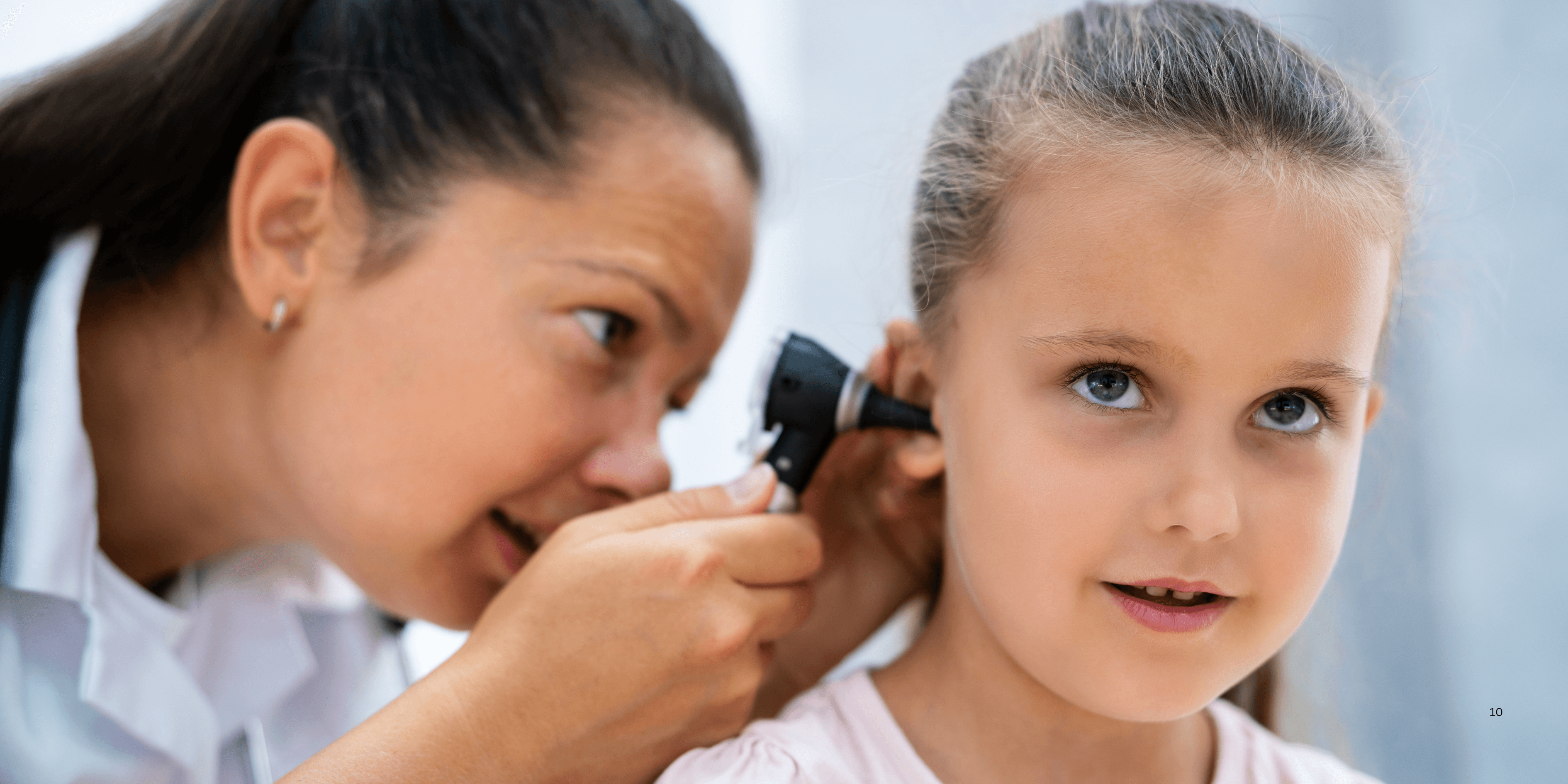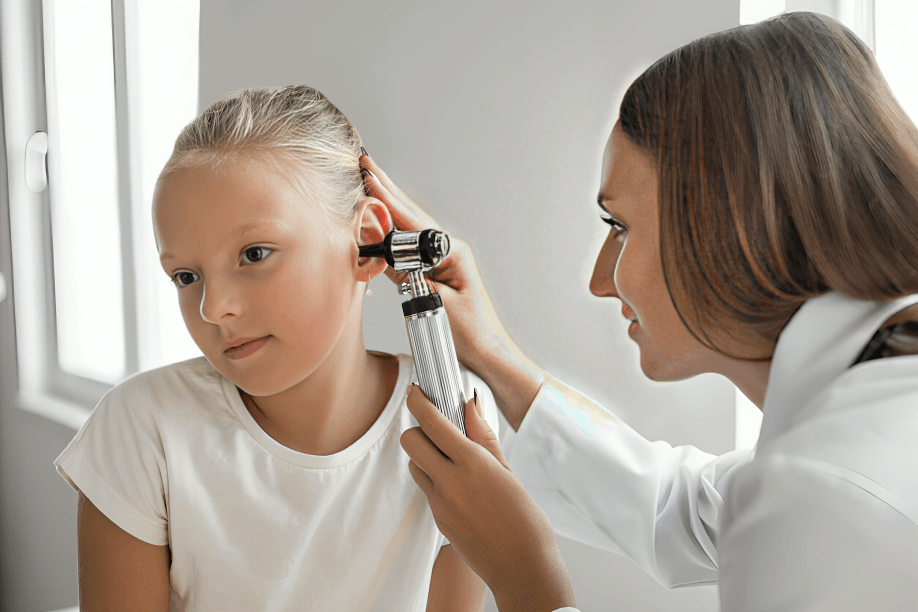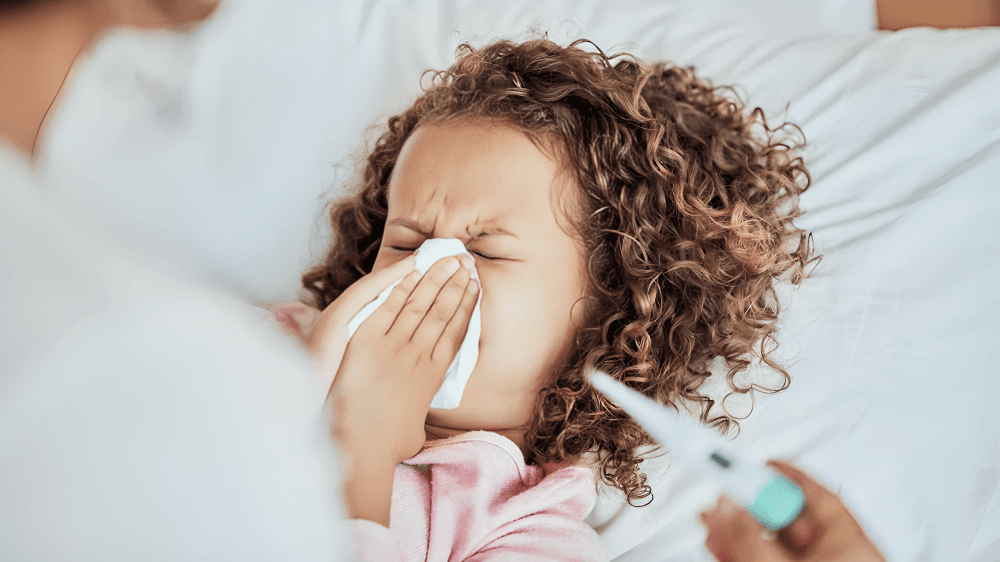
“
Recognizing & treating ear infections in kids is vital for preventing pain, hearing loss, or further complications. These common childhood issues often stem from colds or fluid buildup in the middle ear. Understanding the signs, such as ear tugging, fever, or irritability, helps ensure timely treatment. 1
1
”
Pediatricians often emphasize that most ear infections in kids result from viral or bacterial upper respiratory infections, which travel to the middle ear and cause fluid accumulation and inflammation. 1
One early symptom of a possible ear infection in toddlers or infants is frequent tugging or rubbing of the ear, often accompanied by fussiness or difficulty sleeping at night. 2
Children experiencing ear infections may show signs of hearing trouble, such as not responding to sounds or needing higher volumes, especially when fluid builds behind the eardrum. 3

Fever often accompanies ear infections in kids, particularly in acute cases, with temperatures ranging between 100°F and 104°F, signaling inflammation or bacterial involvement.
Ear drainage, especially pus or fluid leaking from the ear canal, can indicate a ruptured eardrum, a common complication of untreated or severe middle ear infections in children. 4
A child with an ear infection may refuse to eat or drink due to pain during swallowing or chewing, which causes pressure changes in the middle ear, worsening discomfort. 5
Irritability and frequent crying without obvious causes can suggest inner ear discomfort, especially in babies who cannot verbally express pain or pressure caused by infections. 6
Loss of balance or dizziness may occur in children with inner ear infections, as the ear plays a key role in maintaining body equilibrium and spatial orientation. 7
Allergies, exposure to smoke, or bottle-feeding while lying flat can increase the risk of ear infections, making lifestyle and environmental changes crucial preventive strategies. 8

Physicians diagnose ear infections using an otoscope, a tool that helps view redness, bulging, or fluid behind the eardrum, helping confirm inflammation or infection signs.
Antibiotics are prescribed only when necessary, especially for bacterial infections or prolonged symptoms, as many ear infections resolve naturally within 2–3 days. 9
Warm compresses over the affected ear can help relieve pain and promote fluid drainage, especially in combination with over-the-counter pain relievers recommended by pediatricians. 10
Recurrent infections may affect language development or speech clarity due to hearing difficulties during critical learning periods, highlighting the importance of early treatment. 11
Tympanostomy tubes, or ear tubes, are tiny cylinders placed in the eardrum to ventilate the middle ear and prevent fluid buildup in children with persistent or chronic infections. 12
Avoiding pacifier overuse after six months can reduce the risk of ear infections, as excessive sucking may interfere with proper Eustachian tube function and drainage. 13

Seasonal colds and flu increase ear infection rates, especially in fall and winter, when viruses spread more easily and cause congestion in the nasal and ear passages.
Children attending daycare may have higher exposure to infections and thus a greater likelihood of developing ear infections due to frequent contact with respiratory viruses. 14
Decongestants and antihistamines are not routinely recommended for treating ear infections in children unless allergies or sinus issues are contributing to ear pressure. 15
It’s important to complete any prescribed antibiotic course fully, even if symptoms improve early, to prevent recurrence or antibiotic resistance from under-treatment. 16
Some pediatricians advise surgical evaluation if a child has more than three ear infections in six months or four in a year, especially if speech or hearing is affected. 17


